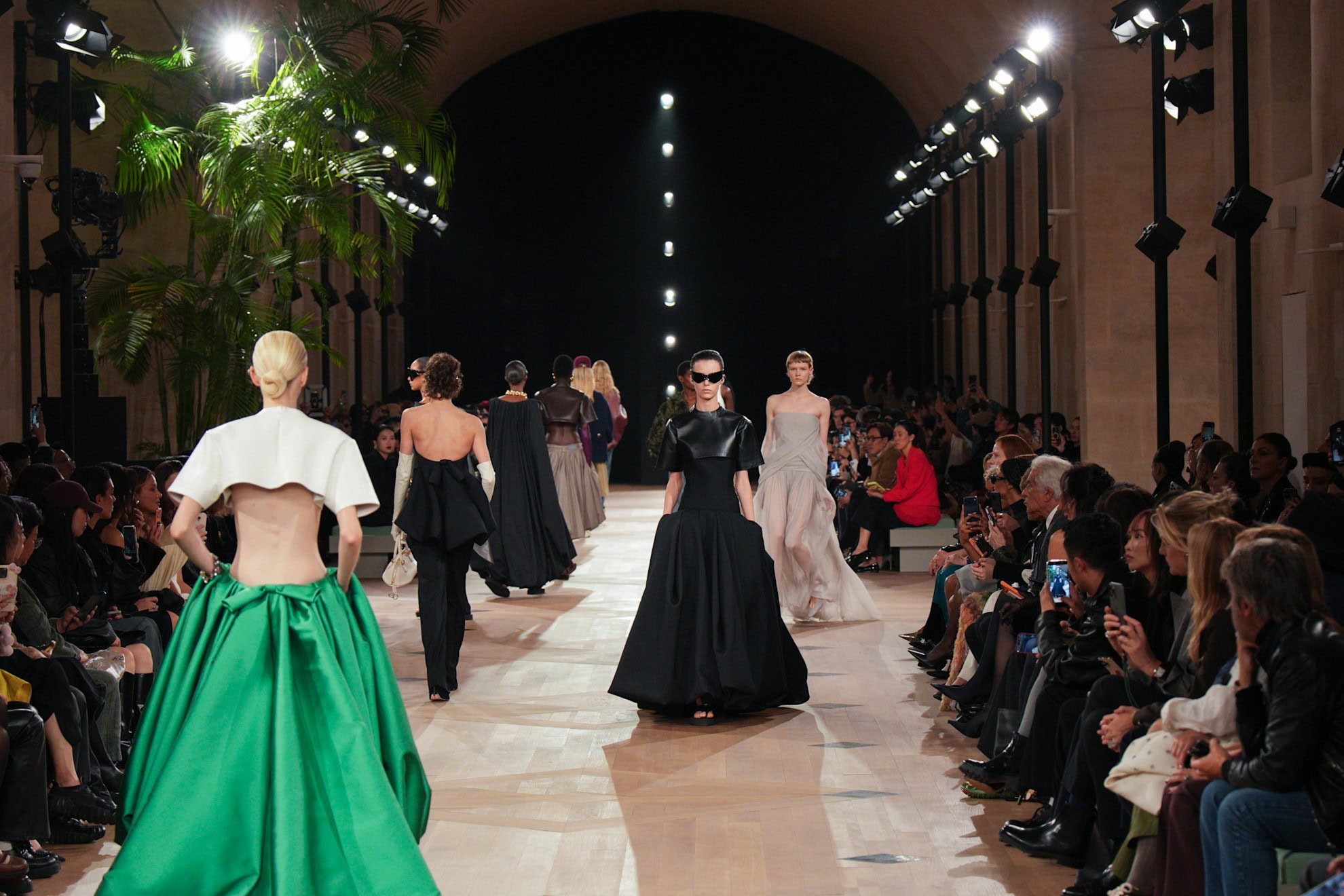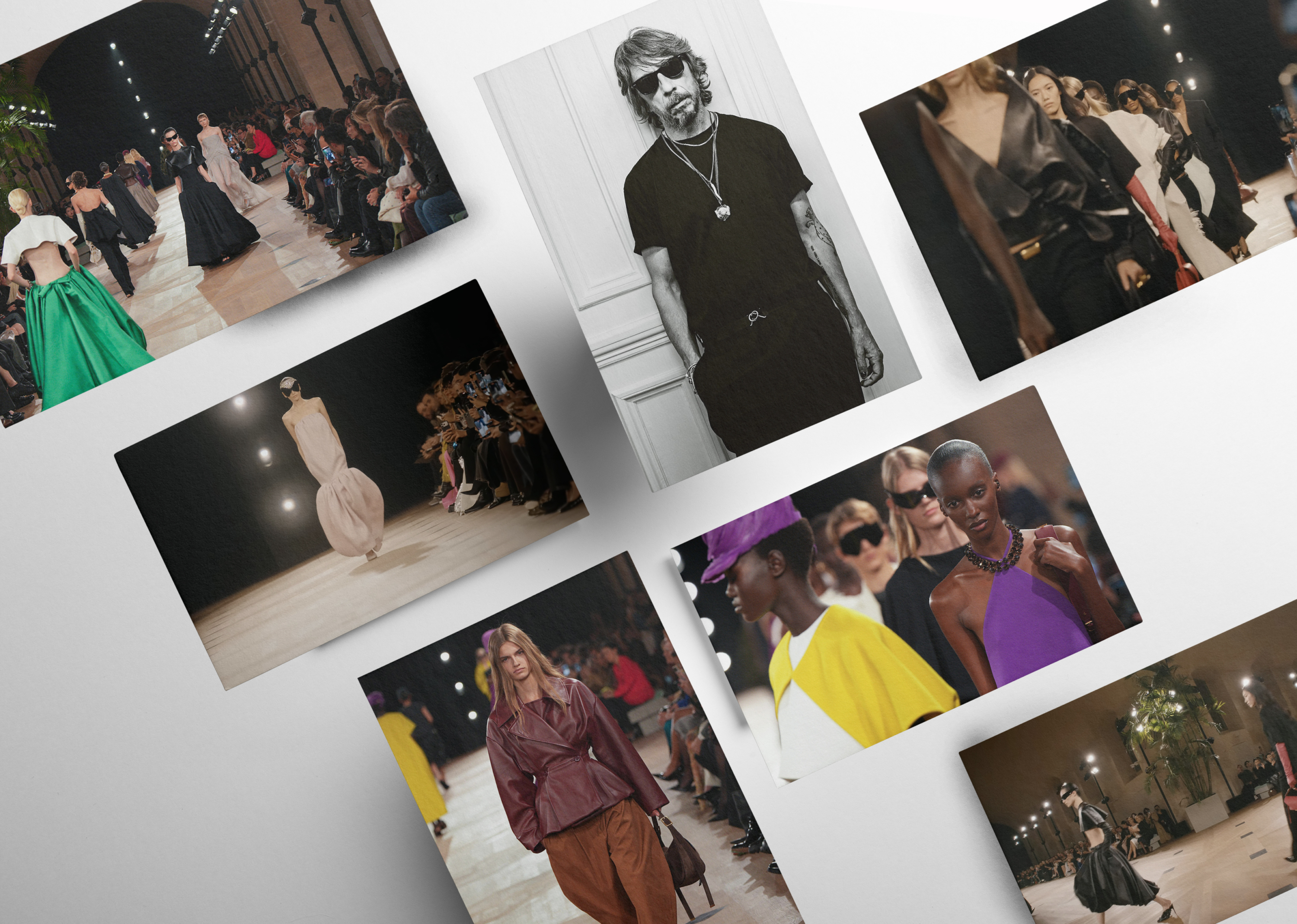Piccioli Brings His Mastery Of The Cut To Balenciaga, Reconciling Past And Present In A Debut Of Grace And Power.
By Kenneth Richard
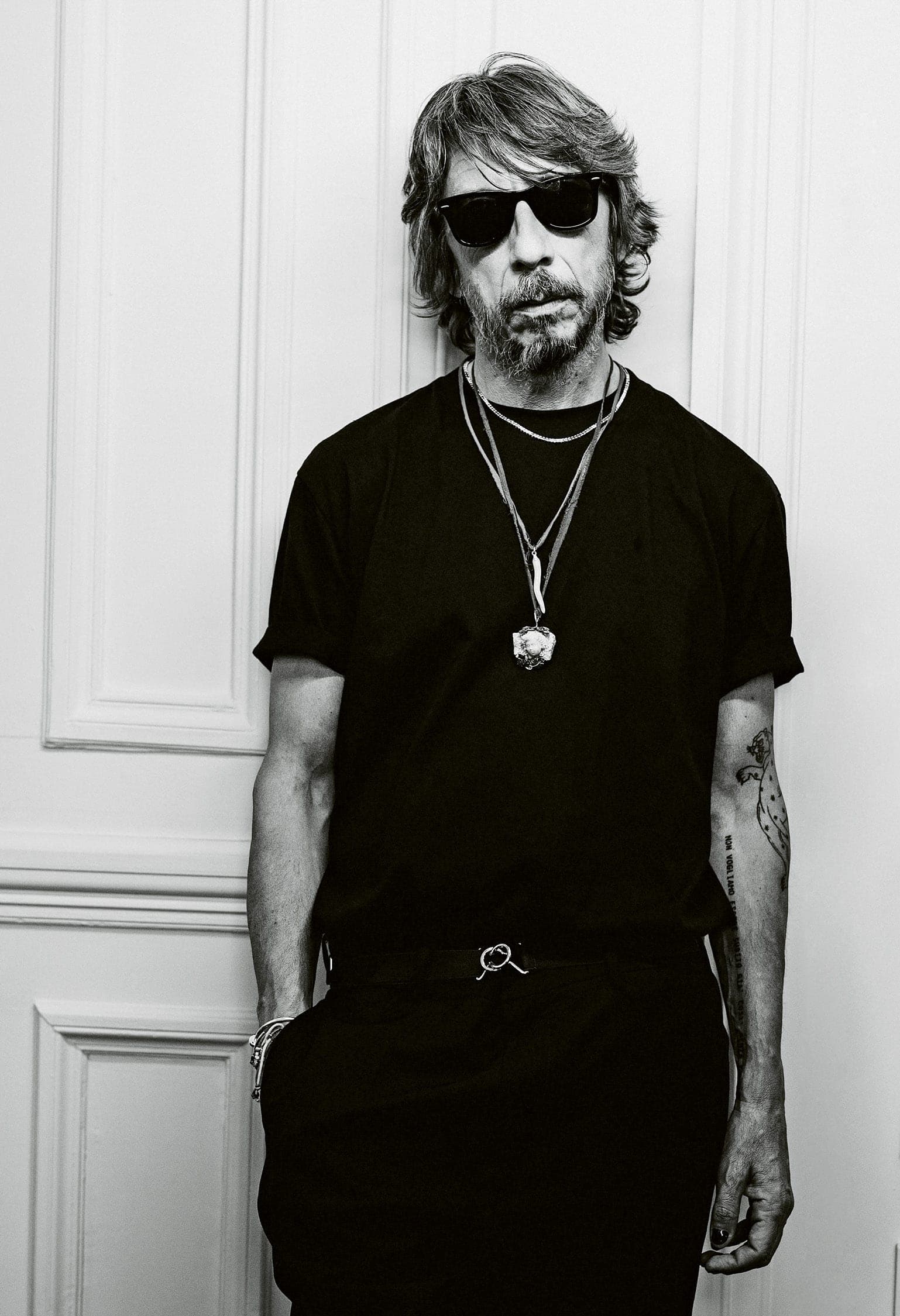
The air at Balenciaga’s Paris headquarters felt almost ecclesiastical. More temple than corporate address, the marble halls glowed with reverence as guests took their seats. It was here, only months earlier, that Demna had staged a retrospective exhibition to close his tenure. Now, in a rare passage of fashion history, the incoming and outgoing creative directors overlapped — one handing over a legacy, the other preparing to carve his own.
Backstage, the atmosphere carried its own gravity. Celebrities of substance — Kristin Scott Thomas, Anne Hathaway, Meghan Markle — moved quietly through the narrow corridors, each pausing to embrace Pierpaolo Piccioli, offering whispered congratulations as though in benediction. The new Kering CEO, Luca de Meo, was also present to mark the occasion. Piccioli’s wife waded through the crush to deliver a celebratory kiss. And then there was Giancarlo Giammetti, the legendary Valentino co-founder who had once mentored Piccioli, raising a toast to his former protégé. For a moment, it was less the chaos of backstage than a scene from Lost in Translation: hushed blessings exchanged before a moment of reinvention.
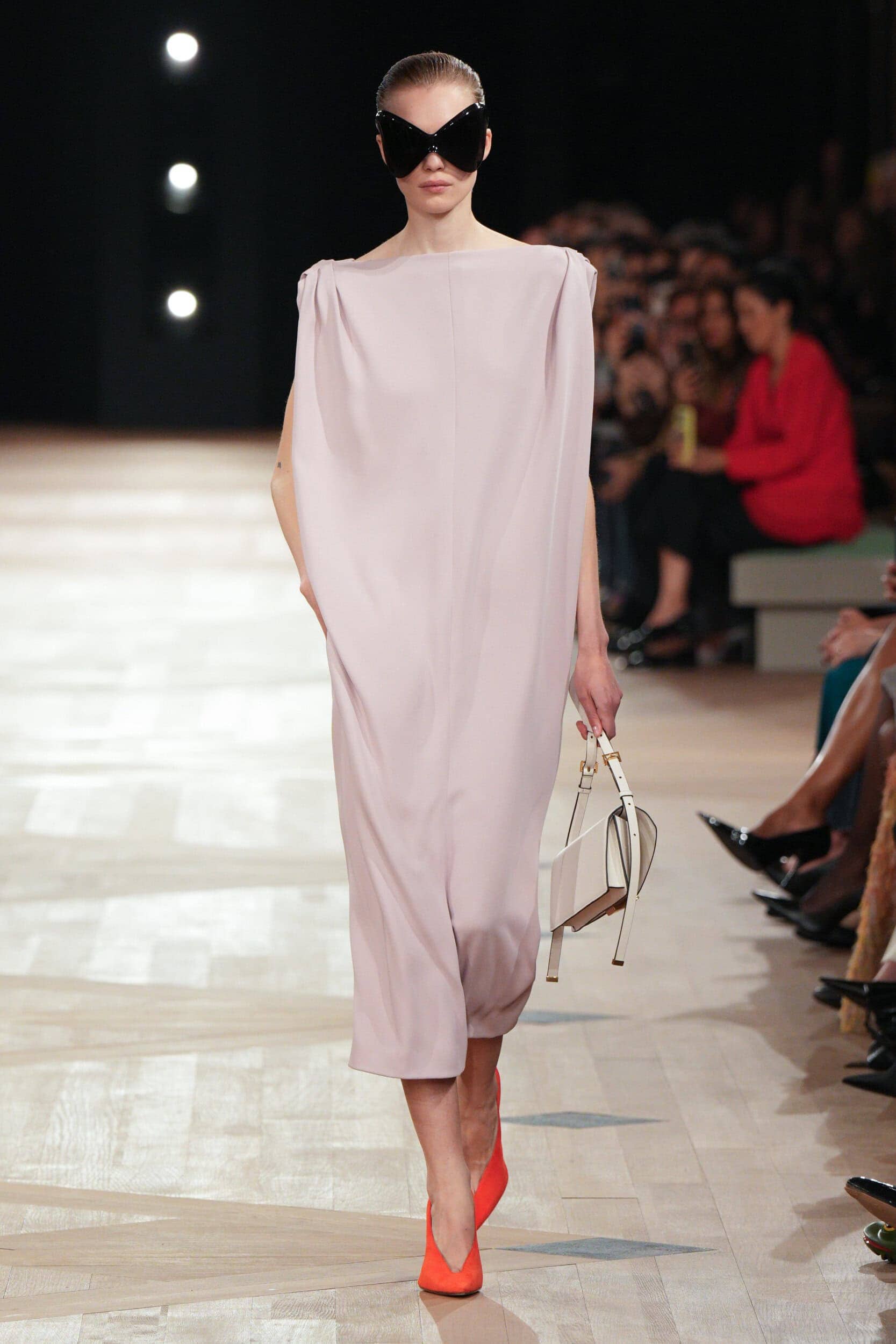
When he began to speak, Piccioli was measured, serene — the voice of a man who has been here before. His signature glasses caught the light, his salt-and-pepper hair fell across his forehead. “I want to embrace the past,” he said. “Not deny it. To do so would be both stupid and disrespectful. You are here because of the people who came before you.” His mission, he explained, was reconciliation: couture as culture, fused with the reality of streetwear. “Couture for me is a cut,” he continued. “Something you can apply to a dress, yes — but also to a T-shirt.”
The collection embodied that philosophy. It opened with a dress from Balenciaga’s archives — a design that Piccioli described as “freeing women from restriction” — before shifting into his own vocabulary of volume and space. “Couture is not about decorating the body, but shaping the space around it,” he observed. In his hands, body, fabric, and air formed a trinity: gowns suspended in lightness, gazar manipulated to create structure without weight, wool and silk fused to form paradoxes of strength and ease. The effect was both maximalist and minimal, grand yet wearable, high yet grounded.
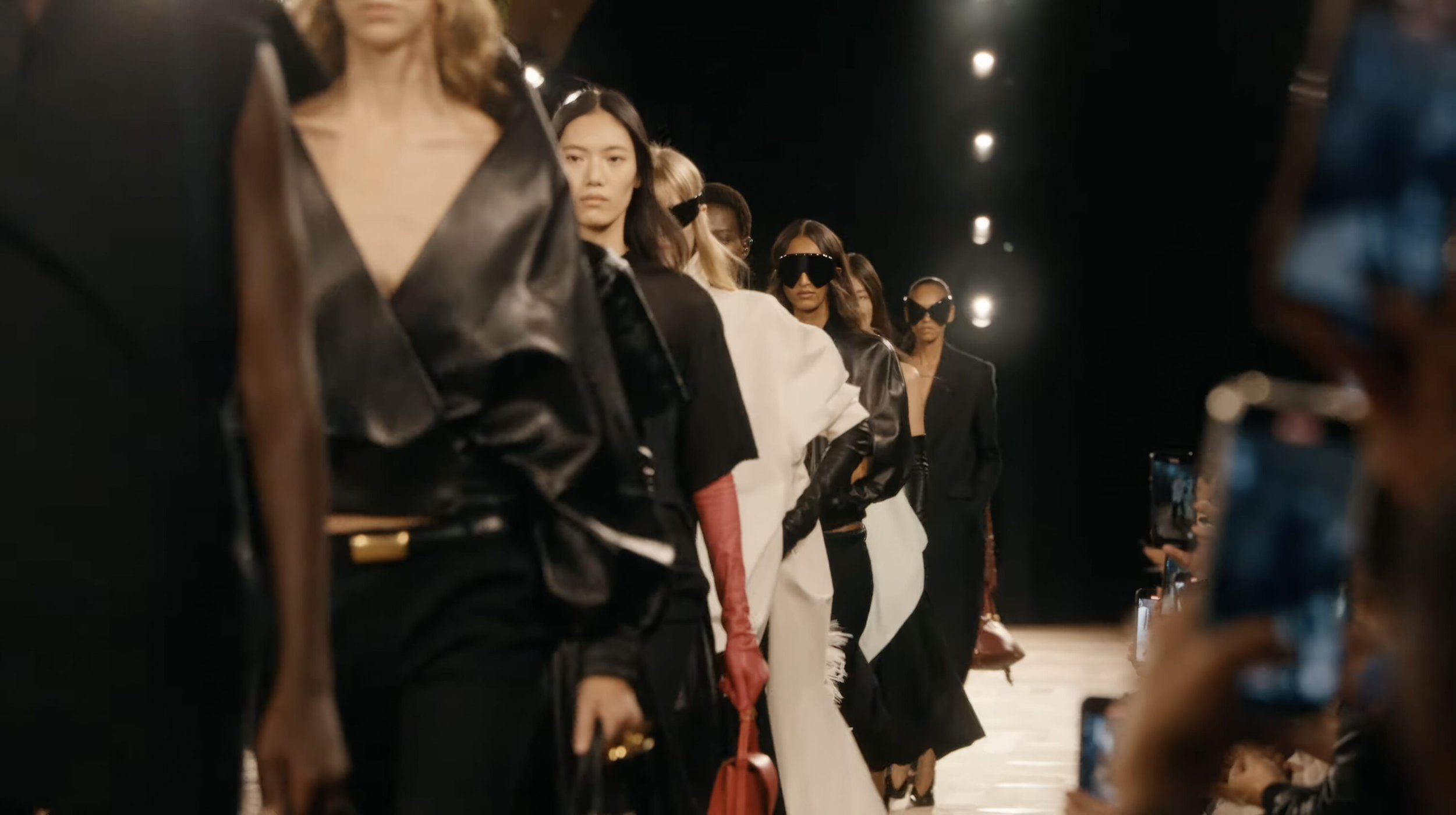
He acknowledged Demna’s imprint — the archetypes of T-shirts, chinos, and white shirts pushed to streetwear extremes — and insisted on bridging that legacy rather than discarding it.
I wanted reconciliation. Culture and street. Heritage and reality. It was important that the clothes felt free, that you could just walk in them, walk out of them. Freedom is the point.
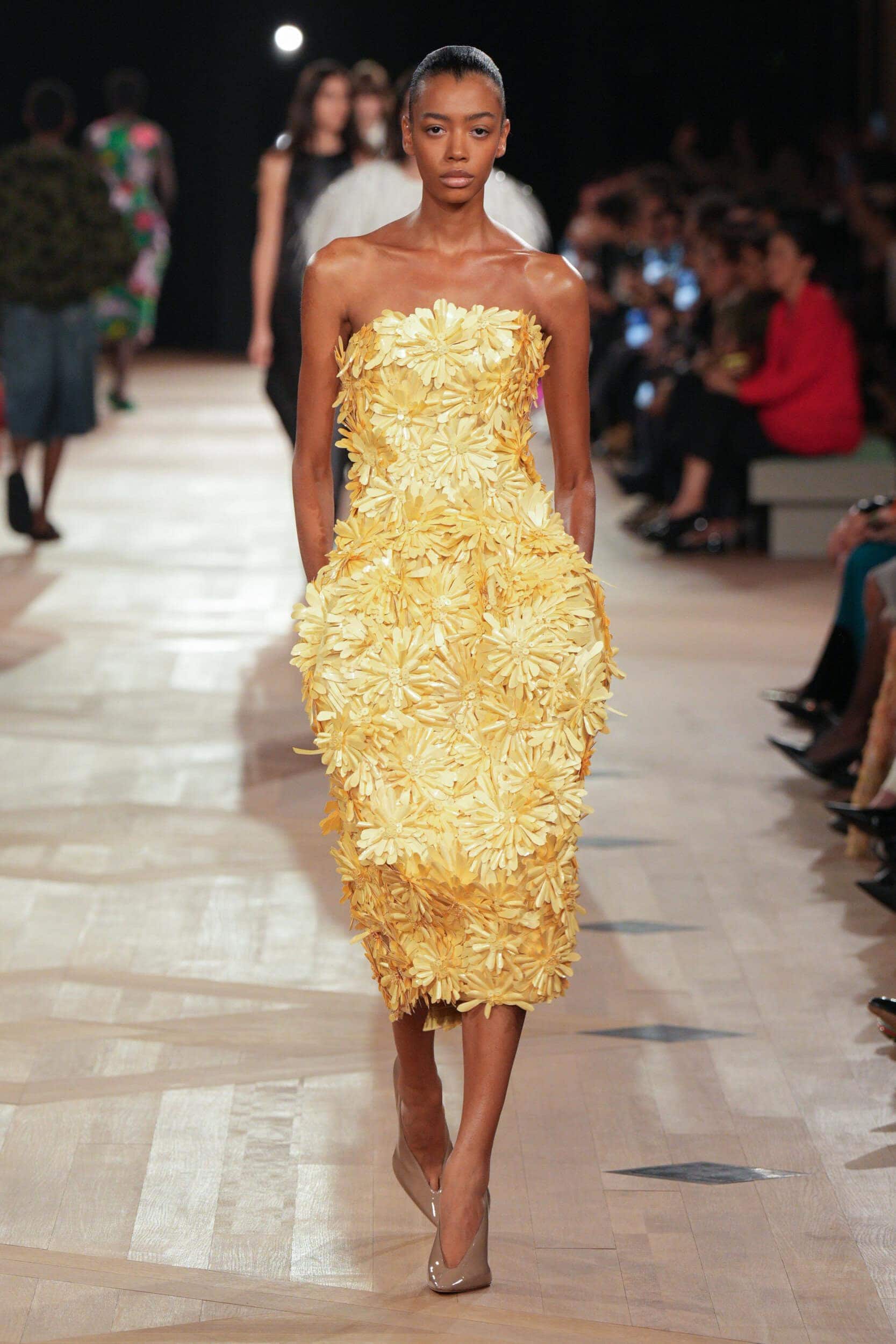
Color, as always with Piccioli, acted as an immediate gesture, bold hues functioning as architecture in themselves. Florals, drawn from Balenciaga’s own codes, were reimagined not as prints but as textures — surfaces that shaped volume and depth. Movement was key. He described studying Cristóbal Balenciaga’s gowns in the archives, noting how static photography obscured their essence. “When you see them in motion, you understand how sculptural they were,” he said. “They shaped space rather than simply decorated it.”
Backstage, Piccioli seemed untouched by nerves, steady in his conviction. If Demna made Balenciaga the emblem of street culture’s sharp edge, Piccioli appeared intent on softening the house without stripping it of its severity. Again and again, his words returned to the human.
Putting people in the center, is the only way forward.
In the mirrored calm of his debut, one truth emerged: Pierpaolo Piccioli was not here to erase, but to embrace. By reconciling couture and street, heritage and freedom, body and air, he offered not just a new vision of Balenciaga, but a reminder of why fashion still matters — for the humanity it carries in every gesture, every thread.
